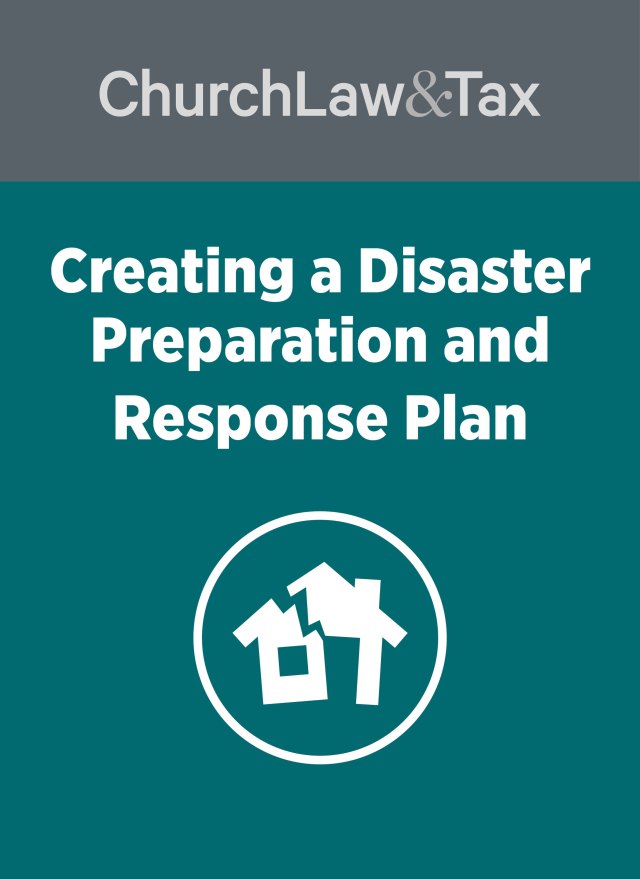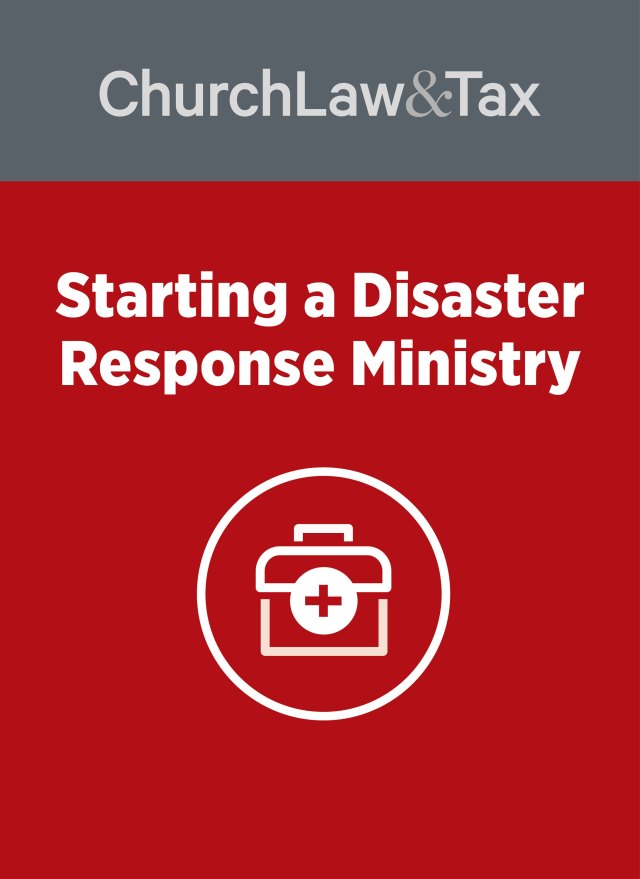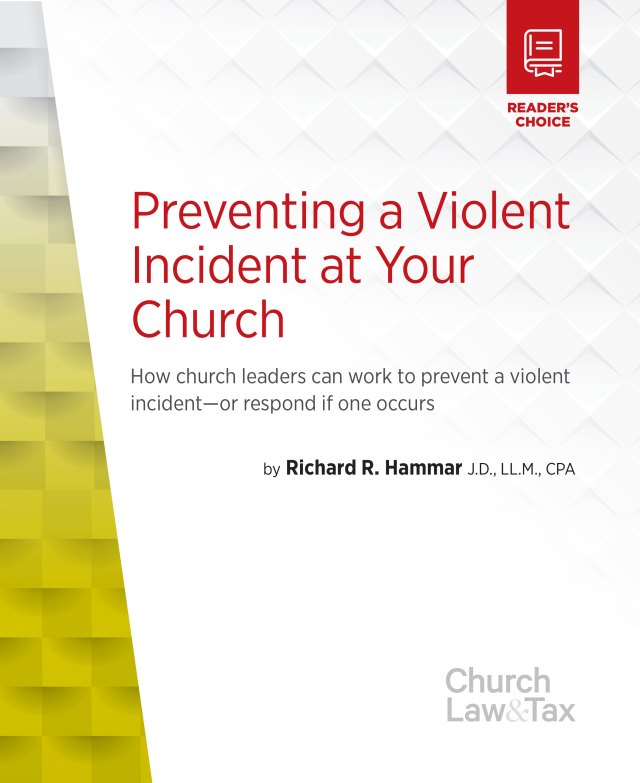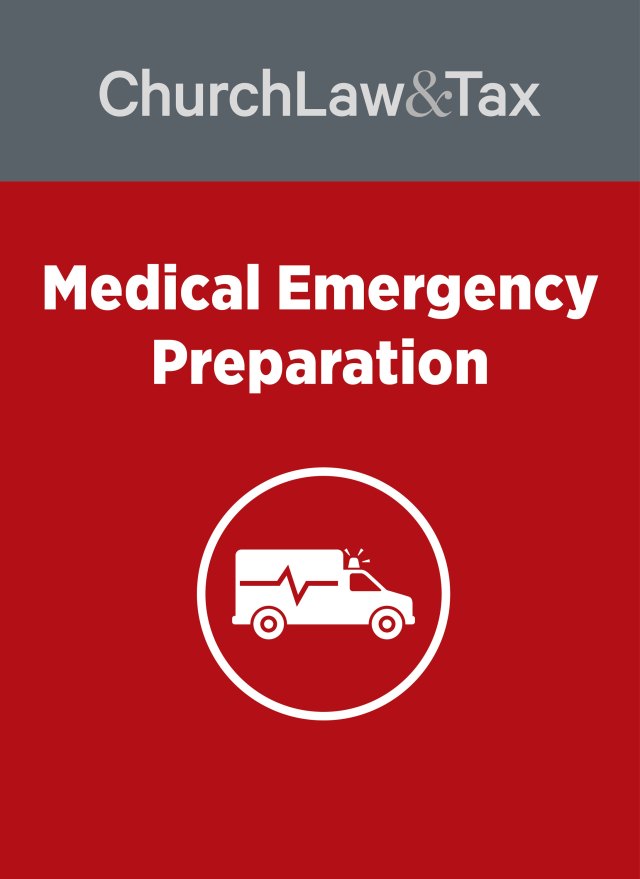In addition to specifically addressing active-shooter incidents, the FEMA Guide suggests a process that houses of worship should follow when developing an emergency operations plan (EOP). This article provides an overview of the Guide’s suggestions.
At the outset, churches should note that the Guide’s suggestions apply to all types of emergencies, not just active-shooter incidents. Like any entity, churches are susceptible to harm from natural disasters, power failures, explosions, and other similar events. Although harm due to human violence is always a concern, churches should not ignore other types of threats. Additionally, the Guide’s suggestions are adaptable to any size and type of congregation. Some of the details provided may seem applicable only to large groups, but groups of all sizes should consider the Guide’s suggestions and apply them as much as possible. Furthermore, churches with educational institutions on their property should consult FEMA’s Guide for Developing High-quality School Emergency Operations Plans for additional information.
Foundational Considerations
Three federal initiatives are helpful for drafting an effective EOP. Although churches are not required to use the terminology and approaches suggested by these initiatives, doing so will aid communication and collaboration with emergency management officials and emergency responders. Individuals working in these capacities at local, state, and national levels are familiar with, and trained to follow, the procedures outlined in federal initiatives.
In 2011, President Obama signed Presidential Policy Directive 8 (PPD-8), which delineates the United States’ approach to preparing for national emergencies in terms of five focus areas—prevention, protection, mitigation, response, and recovery. The Guide defines these terms , which are outlined in Table 1:
Incorporating the terminology of PPD-8 into an EOP will help ensure that efforts undertaken by a church are aligned with those of first responders and others. Additionally, the National Incident Management System (NIMS) and Incident Command System (ICS) standardize the approaches with defining responsibilities and roles and managing specific types of incidents. Churches should become familiar with these systems and incorporate their procedures as appropriate. They are available at fema.gov/national-incident-management-system.
Planning Principles
The Guide encourages an EOP that is leadership-supported, comprehensive, and inclusive , as further explained in Table 2:
The Planning Process
Six steps for planning are outlined in the Guide: (1) Form a Collaborative Planning Team, (2) Understand the Situation, (3) Determine Goals and Objectives, (4) Plan Development, (5) Plan Preparation, Review, and Approval, and (6) Plan Implementation and Maintenance.
Step 1: Form a Collaborative Planning Team
The Guide aptly notes that successful emergency operations occur when a team of individuals and organizations are involved both in planning and execution. Accordingly, it recommends that churches first identify a core planning team that is “small enough to permit close collaboration, yet large enough to be representative of the house of worship, its congregation, and its community partners.” Ideally, the team will include first responders or others who have emergency response expertise, some of whom may be members of the organization. Once the team is identified, team members should determine and clearly define their roles and responsibilities, and should set a regular schedule of meetings.
Step 2: Understand the Situation
Step 2 requires a church to identify the threats and hazards to which it is susceptible, evaluate the risk of those threats and hazards, and then prioritize those risks. To identify threats and hazards, the planning team should draw on the knowledge and expertise of its members as well as community assessments that local and state agencies have conducted.
Once threats and hazards are identified, the team should evaluate the risk that each one poses. “Evaluating risk involves understanding the probability that the specific threat or hazard will occur; the effects the threat or hazard will likely have, including [each one’s] severity; the time the house of worship will have to warn occupants about the threat or hazard; and how long the threat or hazard may last.” The Guide suggests organizing this information in a table so that risks can easily be compared and prioritized. Using a table similar to Table 4 on page 24, churches can consider various aspects of each risk and then determine their priority.
Step 3: Determine Goals and Objectives
In Step 3, the team should decide which of the identified threats and hazards it will address in its EOP. It need not address all of them, but should address more than simply those identified as high risk. Once the team has made this determination, it should “develop goals and objectives for each threat or hazard.”
Per the Guide, goals are “broad, general statements that indicate the desired outcome in response to a threat or hazard. Goals are what personnel and other resources are supposed to achieve. Goals also help identify when major activities are complete and what defines a successful outcome.” In contrast, “objectives are specific, measurable actions that are necessary to achieve the goals.”
Goals can be organized according to the focus areas outlined in PPD-8. For example, a prevention goal related to fires might read, “Prevent a fire from occurring in the church.” Objectives associated with this goal could read, (1) “Provide fire prevention training to all persons that use combustible materials or equipment in or around the church” and (2) “Store combustible materials in fireproof containers or rooms.”
Step 4: Plan Development (Identifying Courses of Action)
Step 4 involves developing a course of action for each of the objectives noted in Step 3. The Guide recommends the following steps for this process, as noted in Table 3:
Step 4 also involves identifying the resources necessary for each chosen course of action. Doing so will help churches identify “resource gaps or shortfalls” that they should address.
Step 5: Plan Preparation, Review, and Approval
In Step 5, planners should draft an EOP based on the research and decisions made in Steps 1 through 4. The Guide recommends that an EOP have three sections: the basic plan, functional annexes, and threat- and hazard-specific annexes.
Basic Plan
The basic plan is general and serves to communicate “an overview of the house of worship’s approach to emergency operations.” The primary audiences for the basic plan are the members of the church, local emergency management officials, and, where appropriate, the community. Shown in Table 5 on page 24 are the main sections of a basic plan and the components that each section should include.
Functional Annexes
Functions are key operations that occur during the course of an emergency. Examples include evacuation and lockdown. Obviously, “[f]unctions may occur consecutively or concurrently, depending on the incident” and how an incident unfolds. Functional annexes are aspects of an EOP that focus on these “critical operational functions and the courses of action developed to carry them out.” When the EOP references a specific function, users of the plan can refer to the annex for information on specific courses of action. Table 6 on page 24 provides a list of annexes that the Guide recommends.
Threat- and Hazard-Specific Annexes
According to the Guide, “threat- and hazard-specific annexes describe the courses of action unique to particular threats and hazards (e.g., fires, hurricanes, active-shooter situations). Courses of action already outlined in a functional annex need not be repeated in a threat- or hazard-specific annex.”
Step 6: Plan Implementation & Maintenance
Implementing the EOP requires training both individuals with specific roles and congregants. Training can take place through meetings, visits to evacuation sites, distribution of plan details, posting plan details throughout the site, and exercises. Exercises allow participants to practice their roles and may reveal gaps in a developed course of action. Churches can conduct exercises verbally, where participants simply discuss what they would do during certain emergencies; they can also conduct drills, where participants can physically walk through the steps that they would take.
Maintaining the EOP requires consistent and measured review by all key stakeholders. Under the best circumstances, a house of worship would review its plan annually. But the Guide advises that “[i]n no case should any part of the plan go for more than two years without being reviewed and revised. Houses of worship may find it easier to review and revise sections of the EOP on a systematic basis rather than the entire plan at one time.”
Conclusion
In sum, developing an EOP is essential for churches. Although the process is tedious and, no doubt, time consuming, an adequate and efficient plan can be developed systematically if churches are willing to regularly dedicate some portion of time to evaluating risks and crafting appropriate responses. If you are a church leader, don’t wait until an emergency occurs before you spearhead the EOP development process. Begin today.





